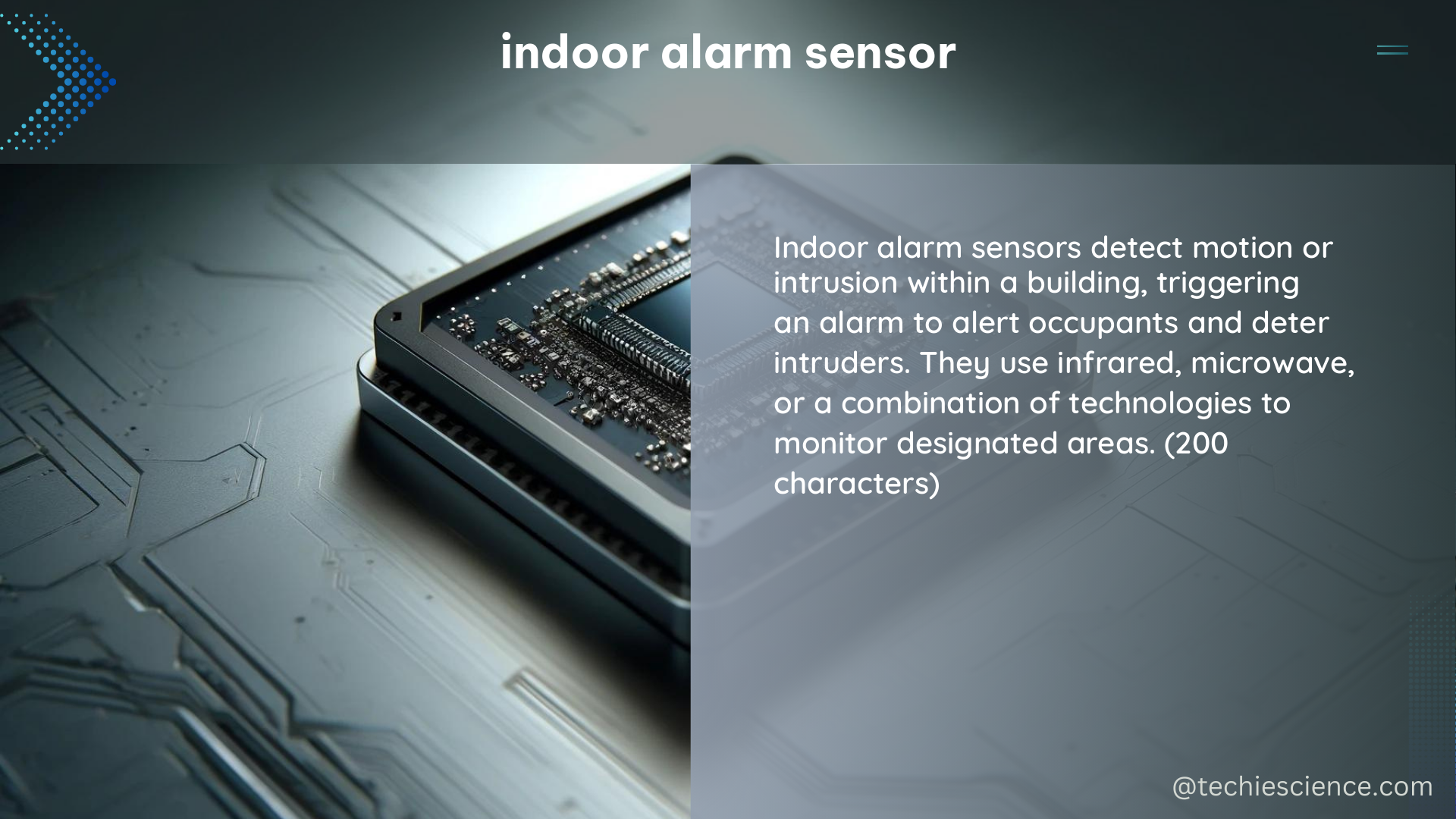Indoor alarm sensors are essential components in ensuring the safety and security of various settings, including nursing homes, hospitals, and private residences. These sensors are designed to detect specific activities or environmental changes and trigger an alarm when necessary. The technical specifications of these sensors vary depending on the type and manufacturer, but they generally include features such as sensitivity levels, detection range, power consumption, and communication protocols.
Understanding Bed-Exit Alarms
One study examined the effectiveness of two types of bed-exit alarms: pressure-sensitive and dual sensor (pressure sensitive plus infrared beam detectors), in detecting bed-exiting body movements in nursing home residents. The study found that the dual sensor alarm had a higher number of true positives (0.593/1.238) compared to the pressure-sensitive alarm (0.086/1.617) in identifying bed-exiting body movements, indicating a marginally significant difference (p = 0.0599).
The study directly observed 14 nursing home residents for a total of 256 nights or 1,636.5 hours, with an average of 18.3 ± 22.3 (± S.D.) nights/participant for an average of 6.4 ± 1.2 hours/night. The least squares adjusted means show a marginally significant difference between the type of alarm groups on the number of true positives (mean/S.E.M. = 0.086/1.617) for pressure-sensitive vs. dual sensor alarm (0.593/1.238; p = 0.0599).
While the dual sensor bed-exit alarm was more accurate than the pressure-sensitive alarm in identifying bed-exiting body movements and reducing the incidence of false alarms, false alarms were not eliminated altogether. This highlights the need for further improvements in the design and performance of bed-exit alarms to ensure reliable and accurate monitoring of patient movements.
Intrusion Sensors and Light Sensors

In addition to bed-exit alarms, other types of indoor alarm sensors include intrusion sensors and light sensors. Intrusion sensors are designed to detect whether an unauthorized person has accessed or attempted to access a protected area. These sensors can be based on various technologies, such as motion detection, vibration sensing, or magnetic field monitoring.
Light sensors, on the other hand, can measure the illuminance of a light source and adjust the brightness of devices accordingly. These sensors are often used in applications such as automatic lighting control, daylight harvesting, and energy-efficient building management.
DIY Indoor Alarm Sensors
For those interested in creating their own indoor alarm sensors, there are various options available, such as using small computing platforms like Arduino or Raspberry Pi. These platforms allow for programming and interfacing with a computer, enabling the creation of custom sensor systems.
When building DIY indoor alarm sensors, it is essential to consider the following factors:
- Sensor Selection: Choose the appropriate sensor(s) based on the specific application and requirements, such as motion detection, light sensing, or proximity sensing.
- Power Supply: Determine the power requirements of the sensor and the computing platform, and select a suitable power source, such as batteries or a power adapter.
- Communication Protocol: Decide on the communication protocol to be used, such as Wi-Fi, Bluetooth, or wired connections, to transmit sensor data to a computer or a central control system.
- Programming and Integration: Develop the necessary software to process the sensor data, trigger alarms, and integrate the system with other smart home or security devices.
- Enclosure and Mounting: Design or select an appropriate enclosure to protect the sensor and computing platform, and determine the optimal mounting location for the sensor.
By leveraging small computing platforms and customizable sensor options, DIY enthusiasts can create tailored indoor alarm sensor systems that meet their specific needs and preferences.
Conclusion
Indoor alarm sensors play a crucial role in ensuring the safety and security of various settings. The technical specifications of these sensors vary, but they generally include features such as sensitivity levels, detection range, power consumption, and communication protocols. Measurable data from studies on bed-exit alarms indicate that dual sensor alarms may have a higher number of true positives in identifying bed-exiting body movements compared to pressure-sensitive alarms.
In addition to bed-exit alarms, other types of indoor alarm sensors include intrusion sensors and light sensors. For those interested in creating their own indoor alarm sensors, there are various DIY options available, such as using small computing platforms like Arduino or Raspberry Pi. By considering factors like sensor selection, power supply, communication protocol, programming, and enclosure design, DIY enthusiasts can create customized indoor alarm sensor systems to meet their specific needs.
References:
- Effectiveness of Bed-Exit Alarms for Detecting a Potential Fall
- Intrusion Sensor
- How Light Sensors Work

The lambdageeks.com Core SME Team is a group of experienced subject matter experts from diverse scientific and technical fields including Physics, Chemistry, Technology,Electronics & Electrical Engineering, Automotive, Mechanical Engineering. Our team collaborates to create high-quality, well-researched articles on a wide range of science and technology topics for the lambdageeks.com website.
All Our Senior SME are having more than 7 Years of experience in the respective fields . They are either Working Industry Professionals or assocaited With different Universities. Refer Our Authors Page to get to know About our Core SMEs.